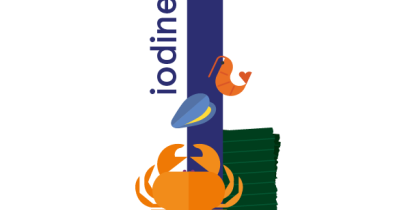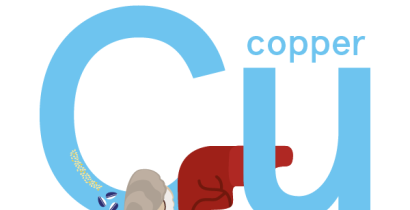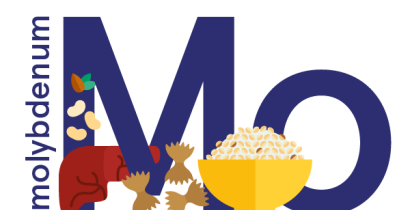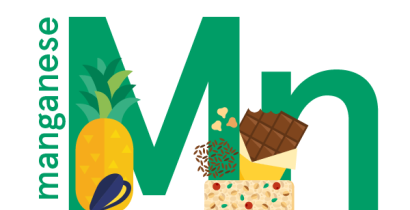Iodine deficiency and iodine rich foods to solve the problem
Last Updated : 27 March 2019At the 1992 World Health Assembly, European nations came together to endorse the elimination of iodine deficiency disease. Then in 2002 the United Nations pushed for eradication of iodine deficiency by 2005. Despite significant progress in the last two decades, iodine deficiency in Europe lingers today. Why is iodine important, and what can be done to address this public health concern?
Iodine in the body
Iodine is essential for thyroid hormone production and thus involved in energy metabolism. Insufficient iodine results in hypothyroidism, a condition marked by weight gain, weakness, and an enlarged thyroid gland (called “goitre”). Iodine deficiency is a significant public health concern, particularly for pregnant women, infants, toddlers and young children, as prolonged deficiency during development results in irreversible brain damage and mental retardation.1
Iodine rich foods
Iodine is not common in many foods, but the largest quantities can be found in seafood, shellfish, seaweed, and in dairy products (due to iodised animal feed).2 A list of common foods sources of iodine can be found in table 1. The iodine content of foods differs by geographical location, due to varying content in soil and seawater. Iodised salt is a significant dietary source internationally, but its use varies widely across Europe. When iodised salt is used in their production, foods with a relatively high salt content such as bread, sausages, cheese, also savoury snacks and certain ready meals, can contribute meaningfully to dietary iodine intakes.
Table 1. Food sources of iodine (data from the UK food composition database3)
|
Food |
Iodine (µg per 100g) |
|
Nori Seaweed |
1470 |
|
Cod |
256 |
|
Shrimp |
100 |
|
Eggs |
50 |
|
Milk and other dairy products |
30 - 63 |
|
Tuna, fresh |
18 |
|
Tuna, tinned |
12 |
Recommended and actual intakes
The European Union (EU) has set a recommended daily allowance for adults of 150 µg iodine, with a maximum of 600 µg per day.2,4
In 2007, the World Health Organisation (WHO) estimated that 19 European countries had adequate iodine intake, up from just two countries in 1993.5 However, out of the 40 European countries surveyed, 13 countries had persistent iodine deficiency. Increased attention is needed for infants, toddlers and young children, a population particularly susceptible to iodine deficiency. In 2004, the WHO estimated that 43% of European children at ages 6–12 years had insufficient iodine intake, and a 2010 UK study in school age girls revealed that 51% of children evaluated were iodine-deficient.5,6
Vegetarians, persons on a low salt diet and those with a milk or fish allergy are also likely to have insufficient intakes.
Iodised salt
Universal iodised salt has been the most cost-effective and successful solution for preventing and treating iodine deficiency worldwide.5 However, few European countries mandate iodised salt, and legislation varies from country to country. As of 2007, 17 out of 40 European countries had national programmes addressing iodised salt. The use of iodised salt may be increasing, as 39% of central and eastern European households consumed iodised salt in 2007, up from 27% in 1999.5
On the other hand, European consumers are eating less salt, largely due to public health initiatives for prevention of high blood pressure and heart disease. In Europe, salt consumption decreased in the past 50 years to a current average of 8–12 g per day, and public health recommendations are pushing for 5–6 g per day.7 The balance between decreasing salt intake for disease prevention, and increasing iodised salt intake raises difficulties for policy makers. Furthermore, consumers are eating salt mainly from processed foods rather than table salt, which requires the food industry to cooperate with iodised salt regulators.
Supplementation and fortification
Iodised salt is the principal solution for deficiency, yet other alternatives exist. Iodine supplements have been used successfully in highest-risk populations such as pregnant women. In Romania, iodised oil successfully replaced iodised salt, and Italy (Sicily) employs iodised water. Outside of Europe, iodine has been added to tea in China, and tested in sugar in Guatemala and the Sudan. Increasing iodine content in animal feed can indirectly raise iodine content in dairy products, such that iodine-rich milk is now a major dietary contributor to iodine intake in northern Europe and the UK.
Looking forward
In 2010, the EURRECA (EURopean micronutrient RECommendations Aligned) Network of Excellence named iodine one of the ten highest ranked micronutrients in need for revised nutrient recommendations and unified policy developments.8 Consistent recommendations and on-going monitoring are crucial for improved intake.
Iodine deficiency remains a public health concern in Europe, yet renewed alliances between government, industry, and consumers combined with advances in iodine fortification and iodised salt policy offer great hope for improvement.
References
- Dunn JT. (2006). Iodine. In M.E. Shils et al. (Eds.), Modern Nutrition in Health and Disease, 10th ed. (pp. 302–311). Philadelphia PA: Lippincott Williams & Wilkins.
- Scientific Committee on Food (2002). Opinion of the Scientific Committee on Food on the tolerable upper intake level of iodine.
- McCance and Widdowson’s 'composition of foods integrated dataset' on the nutrient content of the UK food supply.
- Commission Directive 2008/100/EC of 28 October 2008 amending Council Directive 90/496/EEC on nutrition labelling for foodstuffs as regards recommended daily allowances, energy conversion factors and definitions. OJ L 285 : 9–12.
- WHO and UNICEF (2007). Iodine deficiency in Europe: a continuing public health problem. Geneva: WHO.
- Vanderpump MP et al. (2011). Iodine status of UK school girls: a cross-sectional survey. Lancet 377(9782).
- Busch J et al. (2010). Salt reduction and the consumer perspective. New Food. 2/10:36–39.
- Cavelaars AE et al. (2010). Prioritizing micronutrients for the purpose of reviewing their requirements: a protocol developed by EURRECA. European Journal of Clinical Nutrition. 64(2): 19–30.



